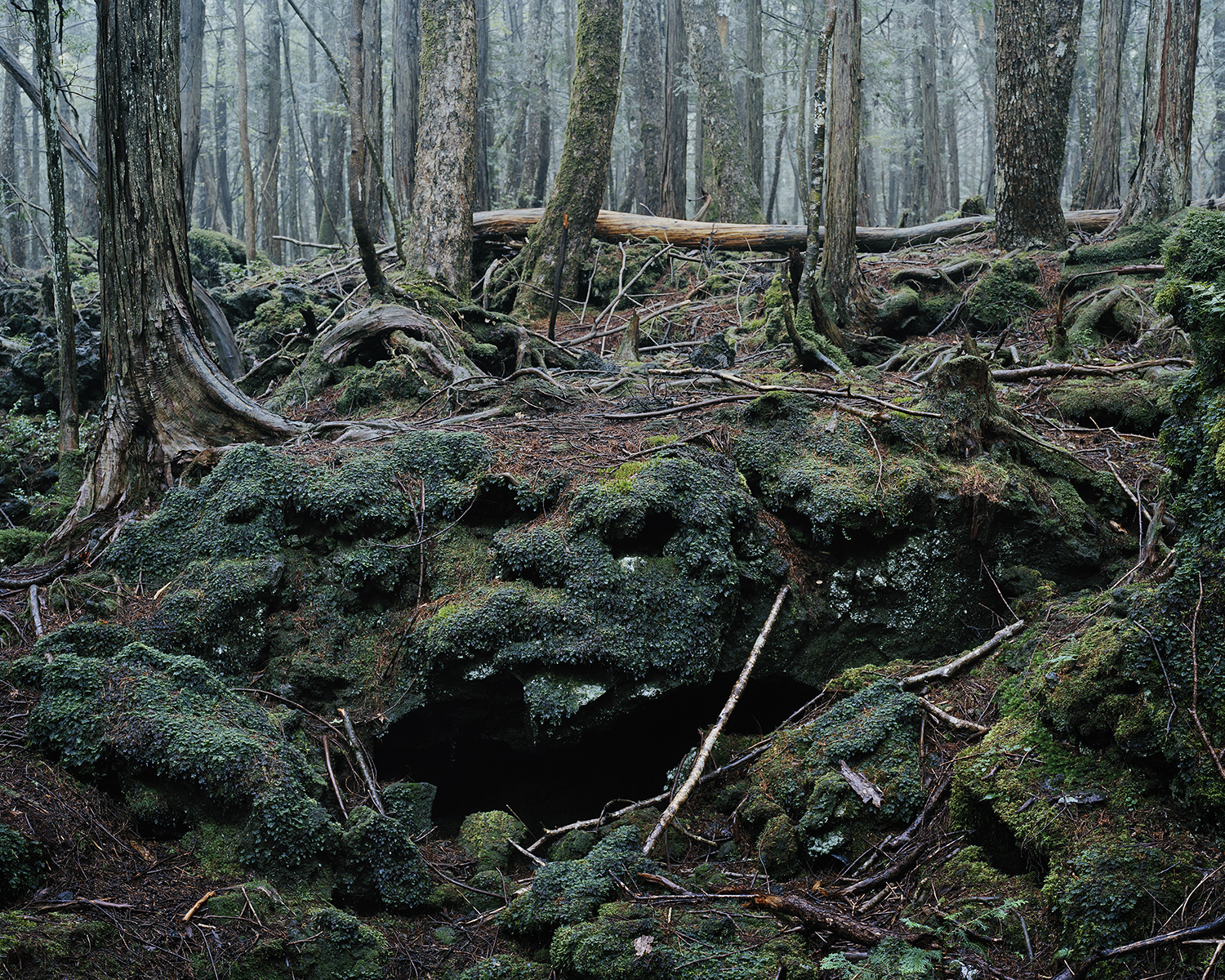Jukai
1999 -
Photographs, photobook, collected and manipulated objects.
Mt Fuji is the iconic, spiritual and mythological heart of Japan. The volcanic mountain is ringed by five spectacular lakes, a theme park with an extreme roller coaster, numerous hot spring resorts and other tourist-oriented locations. Like many other revered landscapes, Mt Fuji also has a darker side. Away from tourist vision, and on the lower slopes of the mountain, are Ground Self-Defense Forces training grounds and on the opposite side of the mountain is the town Kamikuishiki renown as the location of the murderous Aum Shinrikyo cult headquarters. At the north foot of Mt. Fuji lays a labyrinth forest comprised of gnarled moss-covered trees and deep sepulchral caves that is associated with both positive and negative ethnological aspirations and activities.
Aokigahara Jukai (The Blue Sea of Foliage) is also known as the ‘suicide forest.’ This social phenomenon is believed to be influenced by Seicho Matsumoto’s 1960 popular novel (and subsequent film), The Waves Tower, in which the forest is the final resting place for the narrative’s sensual protagonist due to a secret love affair. Strewn amongst the forest are the cultural artifacts one collects for their final hours (amongst other more personal items): tea, medicine, maps, suicide instructions, a toothbrush, photographs, etc. The project Aokigahara Jukai began when I was first living in Japan in 2000 and has been continuously reexamined and further developed with each return visit. The photographs document the forest in a forensic manner though also endeavors to instigate more humane and important discussions around suicide in Japan and internationally. The work also investigates the notion of landscape and how cultural aspirations and fears are projected onto specific natural locations. Ultimately, Aokigahara Jukai attempts to reveal whether the forest, beyond its cultural weighting, has a numinous existence.








